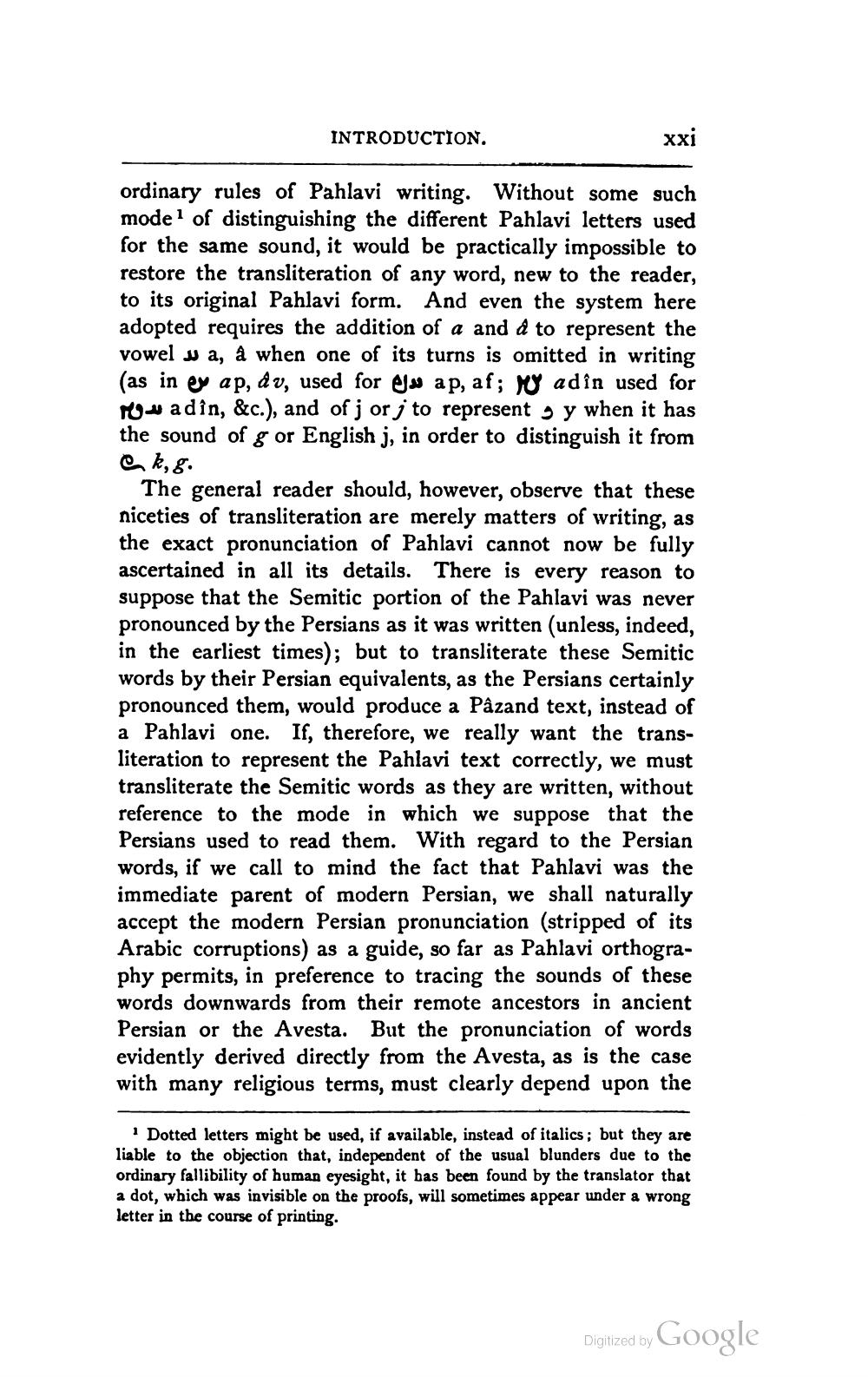________________
INTRODUCTION.
xxi
ordinary rules of Pahlavi writing. Without some such model of distinguishing the different Pahlavi letters used for the same sound, it would be practically impossible to restore the transliteration of any word, new to the reader, to its original Pahlavi form. And even the system here adopted requires the addition of a and d to represent the vowel w a, à when one of its turns is omitted in writing (as in ey ap, dv, used for ela ap, af; y adin used for rouadin, &c.), and of j orj to represent y when it has the sound of g or English j, in order to distinguish it from ek,g.
The general reader should, however, observe that these niceties of transliteration are merely matters of writing, as the exact pronunciation of Pahlavi cannot now be fully ascertained in all its details. There is every reason to suppose that the Semitic portion of the Pahlavi was never pronounced by the Persians as it was written (unless, indeed, in the earliest times); but to transliterate these Semitic words by their Persian equivalents, as the Persians certainly pronounced them, would produce a Pâzand text, instead of a Pahlavi one. If, therefore, we really want the transliteration to represent the Pahlavi text correctly, we must transliterate the Semitic words as they are written, without reference to the mode in which we suppose that the Persians used to read them. With regard to the Persian words, if we call to mind the fact that Pahlavi was the immediate parent of modern Persian, we shall naturally accept the modern Persian pronunciation (stripped of its Arabic corruptions) as a guide, so far as Pahlavi orthography permits, in preference to tracing the sounds of these words downwards from their remote ancestors in ancient Persian or the Avesta. But the pronunciation of words evidently derived directly from the Avesta, as is the case with many religious terms, must clearly depend upon the
Dotted letters might be used, if available, instead of italics; but they are liable to the objection that, independent of the usual blunders due to the ordinary fallibility of human eyesight, it has been found by the translator that a dot, which was invisible on the proofs, will sometimes appear under a wrong letter in the course of printing.
Digitized by Google




